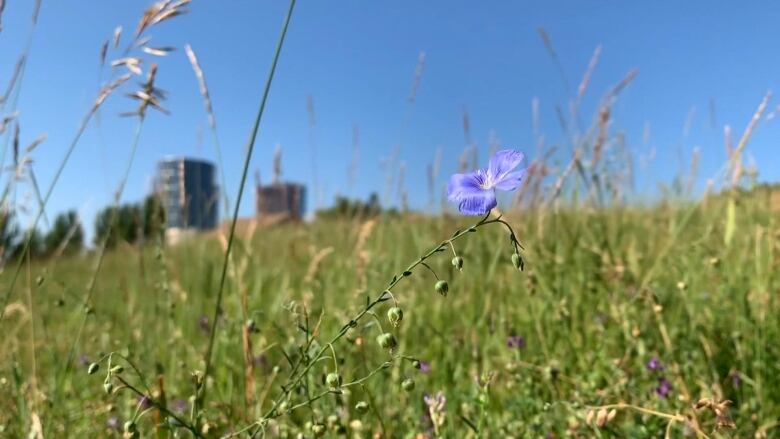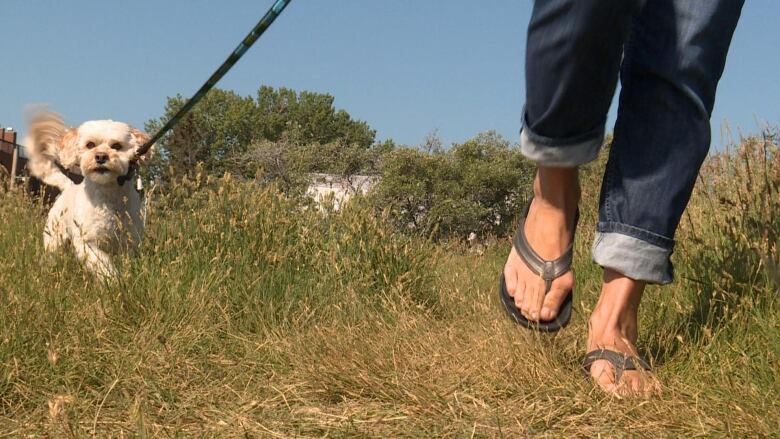Long shaggy grass not neglect, but a planned City of Calgary program
Naturalization sweeps across Calgary as a way to cut down on upkeep costs and help the environment

Many parks and green spaces in Calgary aren't manicured these days, but it's not because they aren't being cared for.
It's part of an initiative to return areas to a natural state,rather than mowing.
It's known as habitat restoration or naturalization.
And, by 2025, the city wants 20 per cent of its open space to look this way.
So far, the city's managed to convert about 22 hectares to a naturalized state and the process is ongoing on another 100 hectares of land.
"The plantings that we have here are largely native, so they're adapted to this habitat and don't require a lot of maintenance," said Tim Walls with the city's parks department.

Walls says this kind of work also helps landscapes better support plants, animals and insects.
Andwhile there's an upfront cost to reshape a landscape, the city expects to save on operating costs in the long run.
"Mowing and irrigation are two major costs that parks has in terms of our operations," he said.
"Naturalization would reduce that amount significantly over time."
It can also help green spaces become more resilient to extreme weather, he said.
Some communities ask for maintenance
Walls said the public reception has been mixed.
"Honestly, it depends on where it is," he said. "Some community members are very much for this kind of work taking place and having longer grass."
In some cases, he said communities ask that the city maintains one part of the green space so that it can be used for recreation.
"We try to work with communities on those kinds of things," he said.

Katharina Doyle has lived across from the revamped park in Bridgeland for 14 years. She says before the naturalization, it was a disaster.
"It was land that was sliding away ... there was a lot of garbage up here," she said. "It was a dangerous area to play in. People would find needles, there would be brush fires."
Now, Doyle says the space is gorgeous and amazing, but she has some concerns about the upkeep.
She says the native plants are great, but the city used to maintain an area at the top of the hill that became a community hub and, now, it's gone a little too wild.
"Now this messy area, even though it's naturalized, is starting to attract garbage," Doyle said. "And when they just had the top area here cleaned up, it took care of it, it was beautiful. And it was really a place for the community to come together and socialize."
All in all, she thinks the city's initiative is a good one it just needs the funding to maintain a balance of wild and welcoming.












_(720p).jpg)


 OFFICIAL HD MUSIC VIDEO.jpg)
.jpg)



























































































